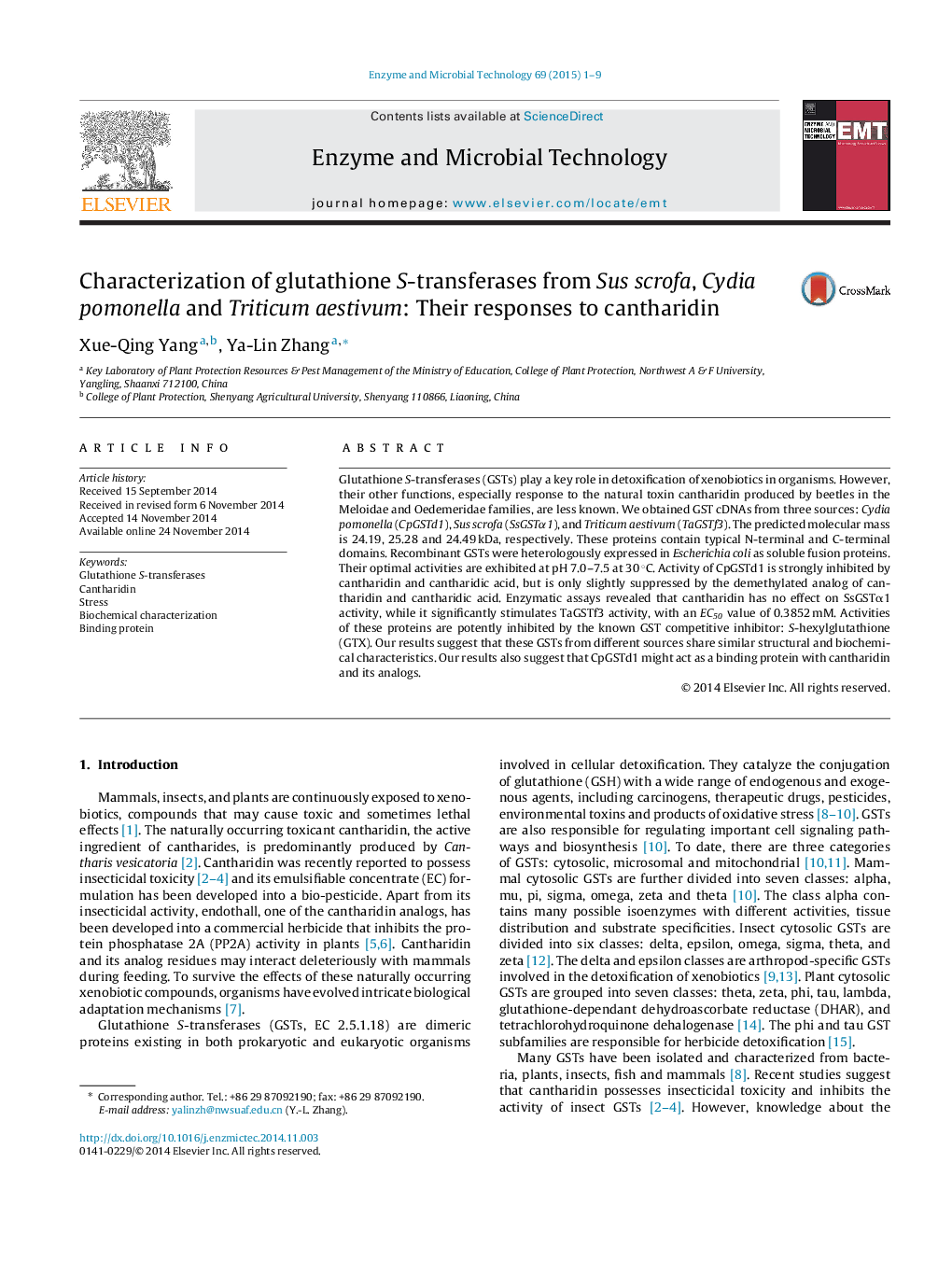| Article ID | Journal | Published Year | Pages | File Type |
|---|---|---|---|---|
| 16941 | Enzyme and Microbial Technology | 2015 | 9 Pages |
•The CpGSTd1, SsGSTα1 and TaGSTf3 share similar 3D structure.•The recombinant CpGSTd1, SsGSTα1 and TaGSTf3 proteins were heterologously expressed in Escherichia coli.•The CpGSTd1, SsGSTα1 and TaGSTf3 proteins share similar biochemical characteristics.•The CpGSTd1 might act as binding protein with cantharidin and its analogs.•The TaGSTf3 activity is induced by cantharidin.
Glutathione S-transferases (GSTs) play a key role in detoxification of xenobiotics in organisms. However, their other functions, especially response to the natural toxin cantharidin produced by beetles in the Meloidae and Oedemeridae families, are less known. We obtained GST cDNAs from three sources: Cydia pomonella (CpGSTd1), Sus scrofa (SsGSTα1), and Triticum aestivum (TaGSTf3). The predicted molecular mass is 24.19, 25.28 and 24.49 kDa, respectively. These proteins contain typical N-terminal and C-terminal domains. Recombinant GSTs were heterologously expressed in Escherichia coli as soluble fusion proteins. Their optimal activities are exhibited at pH 7.0–7.5 at 30 °C. Activity of CpGSTd1 is strongly inhibited by cantharidin and cantharidic acid, but is only slightly suppressed by the demethylated analog of cantharidin and cantharidic acid. Enzymatic assays revealed that cantharidin has no effect on SsGSTα1 activity, while it significantly stimulates TaGSTf3 activity, with an EC50 value of 0.3852 mM. Activities of these proteins are potently inhibited by the known GST competitive inhibitor: S-hexylglutathione (GTX). Our results suggest that these GSTs from different sources share similar structural and biochemical characteristics. Our results also suggest that CpGSTd1 might act as a binding protein with cantharidin and its analogs.
